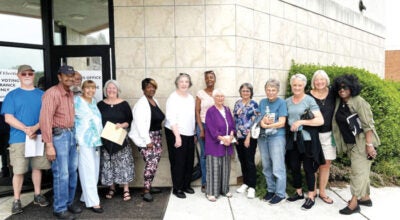Editorial: Eventually, it all adds up
Published 12:00 am Tuesday, May 27, 2008
Here are some eye-opening numbers that have captured attention in recent days. They may not drive home a point, but they have fueled fear, loathing and some lively debate.
– 5 ó as in 5 percent. That’s the average pay hike approved for employees of the state lottery. Meanwhile, most state employees (other than schoolteachers) may have to settle for a 1.5 percent increase, and many wage earners in the private sector may not see any salary increases at all as they struggle to pay higher food and energy bills. N.C Education Lottery boss Tom Shaheen further riled some folks when he blithely suggested that, if other state employees were unhappy about the lopsided pay hikes, they could improve their odds by applying for jobs with the lottery. Here’s a better idea, Tom. In keeping with the spirit of the lottery, why not determine the raise amounts this way: Give every lottery employee a free lottery ticket. Whatever they win will be their raise for the year. Hey, if the odds are good enough for the general public, they should be good enough for your employees, right? Actually, since you’re the fourth-highest paid employee in state government (at $246,000 per year), you can buy your own ticket.
– 4 ó as in $4 (or more) for a gallon of regular unleaded. That’s what many motorists in North Carolina (and several other states) were paying over the Memorial Day weekend and into this week. Nationally, the average price for a gallon of regular was at $3.937 as of midweek, according to a survey of service stations by AAA and the Oil Price Information Service. At those prices, you need to win the lottery to fill up. However, fuelish minds see a glimmer of hope ahead. With Tuesday’s drop in oil prices, some energy analysts are predicting that pump prices may register modest declines in the coming weeks. If so, the falling prices will be related to the next number.
– 11 ó As in 11 billion miles. That’s how many fewer miles Americans drove in March 2008 compared to March 2007. Federal highway officials say that gasoline prices aren’t the only thing driving down the number of miles people are traveling by vehicle (better public transportation and demographic shifts are the other factors). But the drop underscores that gasoline prices have reached the tipping point at which they significantly impact motorists’ wallets and driving habits. This is the first time March travel on public roads has fallen since the gasoline crunch of 1979-1980. According to the Federal Highway Administration, it’s also the sharpest yearly drop in miles traveled for any month in the history of the agency, which has been keeping track of such things since 1942. The FHA says that cumulative vehicle miles traveled has fallen by 17.3 billion miles since November 2006. It’s hard to find a silver lining in higher gasoline prices, but there may be a green one: With Americans rolling up fewer miles, it’s estimated that greenhouse gas emissions fell by an estimated 9 million metric tons for the first quarter of 2008.


